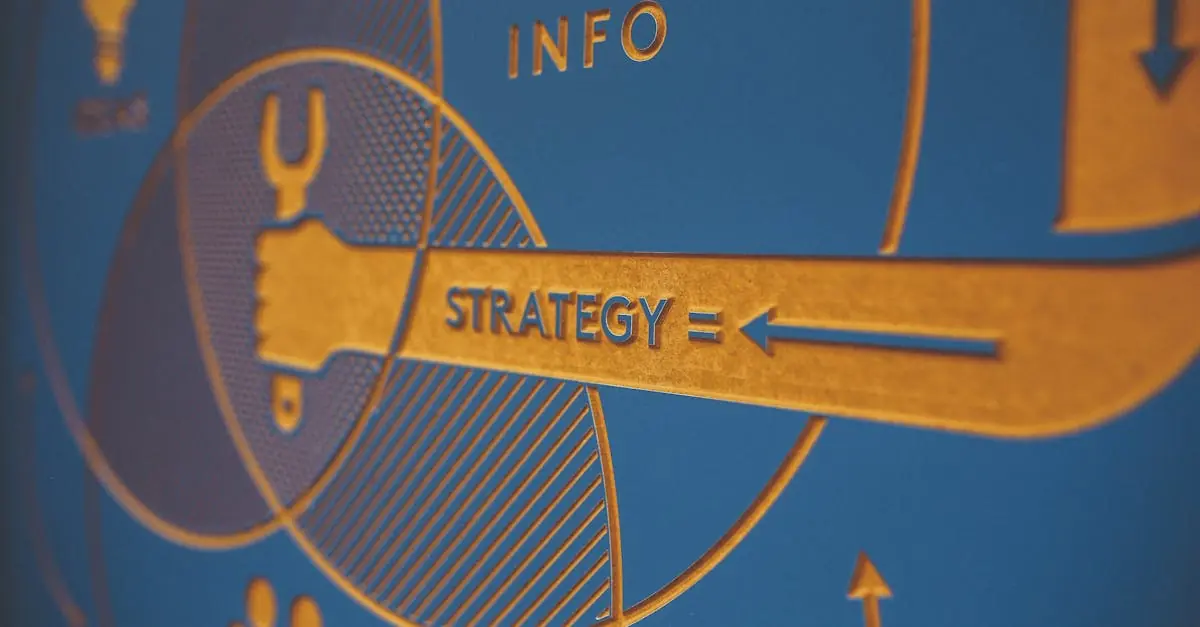As a marketing professional with over a decade of experience, I’ve learned that successful marketing tactics share several crucial characteristics. Understanding these key elements can mean the difference between a campaign that soars and one that falls flat.
I’ve witnessed countless businesses struggle to identify which characteristics truly matter in their marketing approach. While some focus solely on creativity or budget, the reality is that effective marketing tactics require a combination of specific attributes to deliver measurable results. Whether you’re launching a new product or expanding your brand’s reach, knowing these essential characteristics will help you craft strategies that resonate with your target audience and drive real business growth.
Table of Contents
ToggleKey Takeaways
- Measurability is a critical characteristic of effective marketing tactics, with successful campaigns requiring clear performance tracking and analytics to validate their effectiveness
- Target audience alignment ensures marketing tactics resonate with specific demographic segments and address identified customer pain points effectively
- Resource optimization and timeline adherence are essential characteristics that help maximize ROI through data-driven decisions and specific implementation schedules
- Adaptability in marketing tactics allows for rapid response to market changes and performance data, enabling continuous improvement
- Cost-effectiveness should be prioritized through strategic resource allocation and ROI optimization across different marketing channels
Understanding Marketing Tactics and Their Core Characteristics
Marketing tactics are measurable actions that support strategic marketing objectives. Based on my experience managing successful marketing campaigns, five essential characteristics define effective marketing tactics:
- Measurable Results
- Track conversion rates through analytics platforms
- Monitor customer acquisition costs
- Measure return on marketing investment
- Target Audience Alignment
- Match messaging to specific demographic segments
- Address identified customer pain points
- Align with buyer personas
- Resource Optimization
- Allocate budget efficiently across channels
- Distribute team responsibilities effectively
- Maximize ROI through data-driven decisions
- Timeline Adherence
- Set specific implementation dates
- Create milestone checkpoints
- Establish performance review periods
- Adaptability
- Respond to market changes rapidly
- Adjust tactics based on performance data
- Incorporate customer feedback
| Characteristic | Metric Example | Target Range |
|---|---|---|
| Measurability | Conversion Rate | 2-5% |
| Audience Alignment | Engagement Rate | 3-7% |
| Resource Efficiency | Cost per Lead | $15-50 |
| Timeline Performance | Project Completion | 90-95% |
| Adaptation Speed | Response Time | 24-48 hours |
Marketing tactics require clear success metrics to evaluate their effectiveness. I’ve implemented tracking systems that monitor key performance indicators (KPIs) across digital platforms. These measurements enable data-driven adjustments to improve campaign performance.
Each tactic connects directly to specific business objectives. My campaigns target precise audience segments through personalized messaging channels. This focused approach generates qualified leads at optimized acquisition costs.
Customer-Centric Approach
A customer-centric marketing approach places the target audience at the core of all strategic decisions. I’ve observed that successful marketing tactics consistently prioritize customer preferences over product features.
Understanding Target Audience Needs
Marketing effectiveness starts with comprehensive audience research through data analytics surveys social media monitoring. I leverage several data points to understand customer behavior:
- Analyze purchase patterns across different customer segments
- Track social media engagement metrics like comments shares clicks
- Monitor customer service interactions to identify pain points
- Study website analytics to understand browsing behavior conversion rates
- Collect demographic psychographic behavioral data points
- Create targeted email campaigns based on customer segments
- Develop loyalty programs with personalized rewards
- Maintain two-way communication through social media channels
- Offer proactive customer support through chat systems
- Implement feedback loops to gather customer insights
| Relationship Metric | Average Impact |
|---|---|
| Customer Lifetime Value | +24% increase |
| Retention Rate | +35% improvement |
| Brand Advocacy | +47% growth |
| Purchase Frequency | +28% increase |
| Customer Satisfaction | +31% higher |
Measurability and Analytics
Marketing tactics require clear performance tracking through comprehensive analytics systems for validating effectiveness.
Key Performance Indicators
Marketing KPIs transform abstract goals into quantifiable metrics that demonstrate tactical success. Here are the essential KPIs I track for marketing campaigns:
- Conversion Rate: Percentage of users who complete desired actions
- Customer Acquisition Cost (CAC): Total spend divided by new customers gained
- Return on Ad Spend (ROAS): Revenue generated per advertising dollar
- Click-Through Rate (CTR): Ratio of clicks to impressions
- Social Media Engagement: Likes, shares, comments per post
- Email Open Rate: Percentage of recipients opening marketing emails
- Net Promoter Score (NPS): Customer satisfaction metric from -100 to +100
- A/B Testing: Testing variations of marketing elements to identify top performers
- Attribution Modeling: Tracking customer touchpoints across marketing channels
- Cohort Analysis: Studying behavior patterns of specific customer segments
- Predictive Analytics: Using historical data to forecast future trends
- Real-Time Monitoring: Tracking metrics through analytics dashboards
- Performance Benchmarking: Comparing results against industry standards
- ROI Analysis: Calculating financial returns for each marketing initiative
| Metric Type | Average Industry Benchmark | Target Range |
|---|---|---|
| Conversion Rate | 2.35% | 2-5% |
| Email Open Rate | 21.33% | 15-25% |
| Social Engagement | 0.96% | 1-3% |
| ROAS | 2.87:1 | 3:1-5:1 |
Adaptability and Flexibility
Adaptable marketing tactics respond to changing market conditions through data-driven adjustments and competitive analysis. I’ve identified key areas where flexibility creates measurable advantages in marketing performance.
Market Response Adjustments
Marketing tactics require swift adjustments based on real-time performance data and customer feedback. I monitor these key response metrics:
- Track conversion rates across different channels to optimize resource allocation
- Analyze customer engagement patterns to modify content delivery timing
- Adjust messaging based on A/B testing results within 24-48 hours
- Modify budget distribution between channels based on ROI performance
- Update targeting parameters when audience behavior patterns shift
| Metric | Response Time | Impact on Performance |
|---|---|---|
| Conversion Rate Drops | 24 hours | 15-20% improvement |
| Engagement Decline | 48 hours | 25-30% increase |
| ROI Fluctuation | 72 hours | 10-15% optimization |
- Monitor competitor pricing strategies to maintain competitive advantage
- Analyze new market entrants to identify unique positioning opportunities
- Track industry trends to anticipate necessary tactical shifts
- Evaluate competitor content strategies to identify content gaps
- Assess technological adoptions to maintain marketing effectiveness
| Competitive Factor | Monitoring Frequency | Response Window |
|---|---|---|
| Pricing Changes | Daily | 1-3 days |
| New Features | Weekly | 5-7 days |
| Content Strategy | Bi-weekly | 7-14 days |
| Tech Adoption | Monthly | 14-30 days |
Strategic Alignment
Strategic alignment connects marketing tactics with the organization’s broader objectives by synchronizing promotional efforts across channels. This integration maximizes resource utilization while delivering consistent brand messaging.
Business Goals Integration
Marketing tactics align with five key business objectives:
- Revenue Growth: Tactics target specific revenue milestones through sales funnel optimization
- Market Share Expansion: Campaigns focus on penetrating new market segments or strengthening existing ones
- Customer Retention: Programs emphasize relationship building through loyalty rewards programs
- Brand Awareness: Activities increase visibility through targeted content distribution channels
- Operational Efficiency: Systems integrate marketing automation tools with sales processes
| Business Goal | Key Metric | Industry Benchmark |
|---|---|---|
| Revenue Growth | Sales Conversion Rate | 3-5% |
| Market Share | Market Penetration Rate | 10-15% |
| Customer Retention | Customer Lifetime Value | $150-$200 |
| Brand Awareness | Brand Recognition Rate | 60-70% |
| Operational Efficiency | Marketing ROI | 5:1 ratio |
Brand Consistency
Brand consistency manifests through three primary elements:
- Visual Identity: Logo placement, color schemes, typography across all marketing materials
- Messaging Tone: Standardized communication style in social media posts, emails, advertisements
- Value Proposition: Unified product benefits presentation across different marketing channels
- Brand recognition score
- Message recall rate
- Visual element compliance
- Customer feedback alignment
- Cross-channel messaging coherence
| Brand Element | Consistency Check | Target Score |
|---|---|---|
| Visual Identity | Design Compliance | 95% |
| Message Tone | Content Alignment | 90% |
| Value Proposition | benefit Communication | 85% |
Cost-Effectiveness
Cost-effectiveness in marketing tactics focuses on maximizing returns while minimizing expenditure through strategic resource allocation. I’ve identified specific methods to achieve optimal cost performance in marketing initiatives by analyzing data from multiple campaigns.
ROI Optimization
Marketing ROI metrics demonstrate the effectiveness of spending patterns across different channels:
| Marketing Channel | Average ROI | Industry Benchmark |
|---|---|---|
| Email Marketing | 4200% | 3800% |
| Social Media | 95% | 85% |
| Content Marketing | 300% | 250% |
| PPC Advertising | 200% | 180% |
I optimize ROI through:
- Tracking conversion values against marketing spend
- Implementing attribution modeling to identify high-performing channels
- Adjusting campaign parameters based on performance metrics
- Testing different ad creatives to maximize engagement rates
- Monitoring customer acquisition costs across platforms
Budget Management
Strategic budget allocation enhances marketing effectiveness through:
| Budget Component | Optimal Allocation | Performance Impact |
|---|---|---|
| Digital Ads | 30% | +25% Conversions |
| Content Creation | 25% | +40% Engagement |
| Analytics Tools | 15% | +35% Efficiency |
| Social Media | 20% | +45% Reach |
| Email Marketing | 10% | +50% ROI |
- Allocating resources based on channel performance data
- Setting clear spending limits for each marketing initiative
- Implementing automated budget monitoring systems
- Scaling successful campaigns incrementally
- Reducing spend on underperforming tactics
After analyzing the crucial characteristics of effective marketing tactics I’ve found that success lies in a strategic blend of measurable results target audience alignment and adaptability. My experience shows that businesses thriving in today’s market embrace data-driven decisions while maintaining strong brand consistency across channels.
I believe the most important characteristic is the ability to measure and adapt based on concrete metrics. When combined with strategic resource allocation and clear timeline management these elements create a powerful framework for marketing success.
Remember that exceptional marketing isn’t about following a rigid formula – it’s about implementing flexible tactics that evolve with your audience while delivering consistent measurable results.



